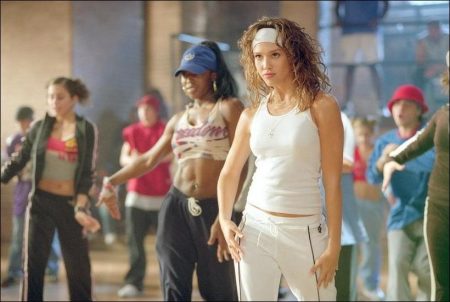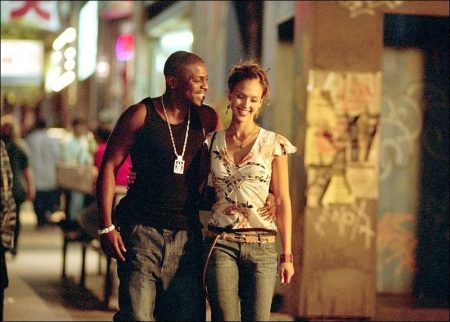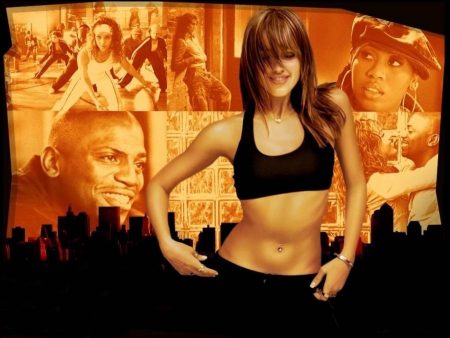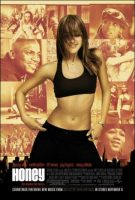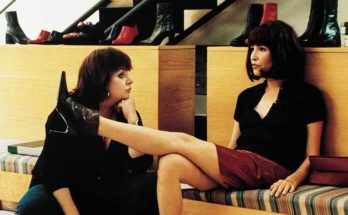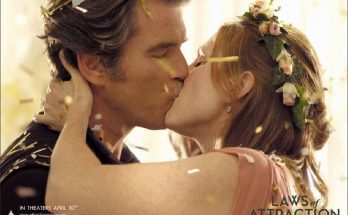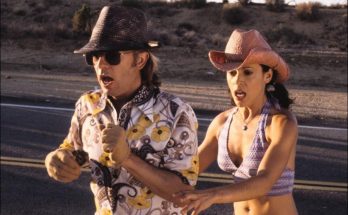Honey Movie Trailer. Grammy-winning producer Rodney Jerkins was brought aboard as executive music producer. His extensive credits include work with Jennifer Lopez, Destiny’s Child, Britney Spears, Mary J. Blige and other pop, R&B and hip-hop icons.
Woodruff explains how the music came together. “One of my dearest friends, music supervisor Paris Davis, came to my rescue. I had just met with a whole lot of great people, but I needed someone to really commit to being involved-feeling the story and being inspired by it-to give me music that really was made specifically for the film.”
“My music plays a character,” says Jerkins, “and that’s the phrase that got my attention.” Jerkins, who always wanted to get into the movie industry, continues, “When I was 19, I was asked during an interview where I wanted to go in life. I told them that once I conquer the music industry, it’s off to the movie industry. So I feel like it was destiny for me to be here.”
Before Jerkins came aboard, Woodruff was especially frustrated about the theme song. He explains, “People gave me stuff more suitable for a club. It didn’t build, it didn’t have an arc, it didn’t tell the story-there was no emotion. I never thought it would be that hard, because I gave them songs like `What a Feeling’ from Flashdance and the soundtrack from Fame. I wanted a modern version of that. It was very difficult to get people to go beyond what they’re doing. But we needed more for this film.”
Woodruff was moved to tears when he heard Jerkins’ “I Believe.” “Rodney totally delivered it. He heard me, he understood the story. I’ll never forget, he played the song and I had tears in my eyes. He really, really got it,” recalls the director.
Satisfied with “I Believe,” Woodruff pushed Jerkins for more. “One day I called him and said I needed another song. I roped him in. Now he’s done all kinds of stuff; songs with live musicians to jazz, to off-Broadway, to funky hip-hop to reggae. He’s awesome.”
Jerkins eventually created 16 songs for the film on a schedule that found him working seven days a week. He even surprised the director with the song “Honey.” Woodruff comments, “That song is a testament to Rodney’s commitment to the film. He’s been inspired by it. Quincy Jones has done so many different things with scoring films and I see Rodney as a young Quincy in that way.”
Producer Platt agrees that Rodney Jerkins was the perfect choice. “The music in this movie is a character and it tells part of the story. The feel of the music, the sensibility of it, the lyrics, all go hand-in-hand with the dance and the movement, the characters, the drama and the story. It was important to Bille and me to find someone that could give a voice to that in a very real way.”
Multiple Grammy-winning composer/producer/arranger/songwriter Mervyn Warren was later involved in the project to score the film, building on the blocks already provided by Jerkins and providing a fluid through line between the prominent musical pieces and production numbers woven into Honey’s story.
Getting Down the Moves…
There are several dance sequences throughout the film, ranging from club dance to music videos to Broadway auditions to neighborhood center hip-hop classes. Filmmakers realized that making a movie about dance would necessitate the involvement of a top choreographer. Enter Laurieann Gibson, one of the most sought after choreographers in the music industry and the driving force behind the dance moves of some of today’s top artists.
Woodruff explains, “Laurieann is not only the choreographer but serves as a reference point for the lead character. She is actually very much like Honey. She’s been on the scene and has done so much, from Broadway to Puffy’s music videos to stage performances to the MTV Music Awards. She’s a part of that world and has created things that have become part of the language in popular dance. We’re from that same world, so I knew she would be up for the challenge of doing this movie.”
Keepin’ it Real…
“Texture was the first thing that popped out in my mind,” says production designer Jasna Stefanovich. “Each movie I do requires research. I know a little bit about hip-hop, but I didn’t know enough. I bought all the hip-hop magazines. Then we went to New York and cruised hip-hop music stores. I grabbed a lot of hip-hop tapes that were produced independently and then researched the hell out of it.”
While the film was shot in Toronto, Stefanovich used the streets of New York’s Lower East Side and the Bronx as references. She wanted the urban scenes of Honey’s day-to-day life (the club where she works, on the street and the youth center where she teaches) to be in sharp contrast to the music video world in which she now finds herself.
Stefanovich observes, “Honey’s world is a world where dancers sweat and you see the sweat. They’re not like video dancers, where everybody looks fresh and made-up. There’s garbage on the street. It’s a place where some windows are washed and some unwashed. That’s the real-life texture I wanted.”
Filmmakers and the designer were emphatic about visually representing the passion of the dance, specifically the teenage passion of hip-hop, and differentiating that from the dance-for-hire world of video production. Honey’s world is shown full of color and texture, and the video world is represented with a crisper, cleaner palette.
Six music videos were shot for the film, two of them on very large sets. “When you’re drawing a concept for a music video set, you need feedback, otherwise you’re working in a vacuum,” says Stefanovich. “The great thing with Honey is that Bille comes from a music video background, so he’s very comfortable in that environment. Because he wasn’t intimidated, his encouragement made it seem effortless.”
In the first music video in the film, Stefanovich created a large geometric plexiglas shape in white with lights on all sides. “I wanted the set to be really minimalist so that it showed off the dancers,” explains Stefanovich. “I didn’t want to use much color because I wanted the skin to look great, and one of the most flattering ways to do that is to use white and light.”
One of the more challenging sets was the one for the music video shoot for the performer Tweet. “Several dancers were attached to wire cables that allow them to fly in and out of the set. You couldn’t have walls, so I put all the focus on the floor,” says Stefanovich. “When you’re looking at it from above, the entire floor lights up and the lights go in every direction as the dancers fly through the air-and then Tweet is lowered from the ceiling. It’s all about the floor.”
Honey (2003)
Directed by: Bille Woodruff
Starring: Jessica Alba, Lil’ Romeo, Mekhi Phifer, David Moscow, Zachary Williams, Joy Bryant, Lonette McKee, Zachary Williams, Laurieann Gibson, Kevin Duhaney
Screenplay by: Kim Watson, Kate Lanier, Susannah Grant
Production Design by: Jasna Stefanovic
Cinematography by: John R. Leonetti
Film Editing by: Mark Helfrich, Emma E. Hickox
Costume Design by: Susan Matheson
Set Decoration by: Steven Essam
Art Direction by: Anastasia Masaro
Music by: Mervyn Warren
MPAA Rating: PG-13 for drug content, some sexual references.
Distributed by: Universal Pictures
Release Date: December 5, 2003
Views: 170
